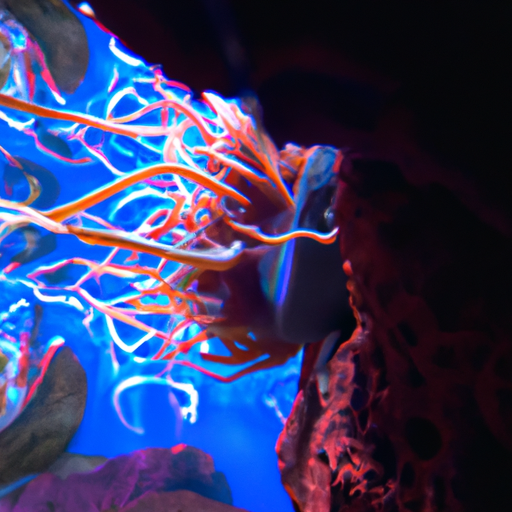-
Table of Contents
What do you know about sea life?

Sea life refers to the diverse range of organisms that inhabit the oceans and other bodies of saltwater. It encompasses a wide variety of species, from microscopic plankton to massive whales. The study of sea life, known as marine biology, is a fascinating field that continues to uncover new discoveries and insights about the oceanic ecosystem.
Sea Life Knowledge
Having knowledge about sea life is essential for understanding the intricate web of life that exists in our oceans. It allows us to appreciate the beauty and diversity of marine organisms and their importance in maintaining a healthy ecosystem. Here are some key points to know about sea life:
- Biodiversity: The oceans are home to an incredible array of species, many of which are yet to be discovered. From colorful coral reefs to deep-sea trenches, each habitat supports a unique set of organisms.
- Adaptations: Sea life has evolved various adaptations to survive in different marine environments. Some species have developed camouflage to blend in with their surroundings, while others have specialized body structures for swimming or hunting.
- Food Chains: Sea life is interconnected through complex food chains. Phytoplankton, tiny plant-like organisms, form the base of the food chain by converting sunlight into energy. They are then consumed by zooplankton, small fish, and so on, creating a delicate balance of predator-prey relationships.
- Migration: Many sea creatures undertake long-distance migrations to find food, reproduce, or escape unfavorable conditions. For example, sea turtles travel thousands of miles to lay their eggs on specific beaches, while whales migrate to feeding grounds in search of abundant prey.
- Threats: Sea life faces numerous threats, including pollution, overfishing, habitat destruction, and climate change. These factors can disrupt ecosystems and lead to the decline of certain species. Conservation efforts are crucial to protect and preserve marine biodiversity.
Marine Biology Facts
Marine biology is the scientific study of sea life and the processes that occur in marine environments. It encompasses various disciplines, including ecology, genetics, physiology, and oceanography. Here are some interesting facts about marine biology:
- Deep-Sea Exploration: Marine biologists have explored the depths of the ocean using advanced technologies like remotely operated vehicles (ROVs) and submersibles. These expeditions have revealed fascinating creatures and ecosystems that were previously unknown.
- Bioluminescence: Many marine organisms, such as jellyfish and deep-sea fish, possess the ability to produce light through a process called bioluminescence. This adaptation serves various purposes, including communication, attracting prey, and defense.
- Coral Reefs: Coral reefs are among the most diverse and productive ecosystems on Earth. They are formed by tiny coral polyps that secrete calcium carbonate skeletons, creating intricate structures that provide shelter for numerous species.
- Marine Mammals: Marine biology also focuses on the study of marine mammals, such as dolphins, seals, and whales. These animals have adapted to life in the water and exhibit fascinating behaviors, including complex communication and social structures.
- Climate Change Impact: Marine biologists are studying the effects of climate change on sea life. Rising ocean temperatures, ocean acidification, and sea-level rise pose significant threats to marine ecosystems, including coral bleaching and the disruption of food chains.
Oceanic Ecosystem Understanding
Understanding the oceanic ecosystem is crucial for maintaining its health and sustainability. It involves studying the interactions between living organisms and their physical environment. Here are some key aspects of oceanic ecosystem understanding:
- Physical Factors: The oceanic ecosystem is influenced by various physical factors, including temperature, salinity, currents, and tides. These factors shape the distribution of marine life and affect their behavior and physiology.
- Trophic Levels: The oceanic food web consists of different trophic levels, starting with primary producers like phytoplankton and ending with apex predators like sharks. Each trophic level plays a vital role in energy transfer and nutrient cycling within the ecosystem.
- Ecological Niches: Different species occupy specific ecological niches within the oceanic ecosystem. They have unique roles and adaptations that allow them to utilize available resources and coexist with other organisms.
- Marine Protected Areas: To conserve and protect the oceanic ecosystem, marine protected areas (MPAs) have been established worldwide. These areas restrict certain activities like fishing and provide a safe haven for marine life to thrive.
- Research and Conservation: Ongoing research and conservation efforts are essential for enhancing our understanding of the oceanic ecosystem and implementing effective management strategies. This includes monitoring species populations, studying migration patterns, and reducing human impacts on marine environments.
In conclusion, sea life is a fascinating and diverse realm that holds many secrets yet to be discovered. By expanding our knowledge of sea life, marine biology, and the oceanic ecosystem, we can better appreciate the wonders of the underwater world and work towards its conservation and sustainability.